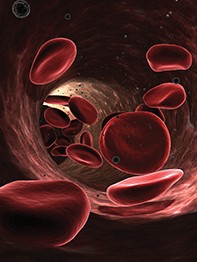Peer Reviewed
Feature Article Haematology
The challenge of investigating thrombocytopenia
Abstract
The investigation of thrombocytopenia is made difficult by the multitude of differential diagnoses to consider and the frequent need for urgency in arriving at this diagnosis.
Key Points
- The diagnosis of thrombocytopenia needs to be confirmed by repeating the platelet count and excluding platelet clumps on blood film examination.
- Patients should be assessed for active bleeding and, if present, they should be referred to hospital immediately.
- Thrombocytopenia is commonly associated with a mucocutaneous bleeding pattern.
- Thrombocytopenia is due to reduced platelet production, increased platelet destruction or increased platelet sequestration.
- Immune thrombocytopenia is recognised as a disorder of both increased platelet destruction and inadequate platelet production.
- Prophylactic platelet transfusion is usually only needed when the platelet count is less than 10 x 109/L.
- Investigations should be directed by the clinical context because of the wide range of causes of thrombocytopenia.
Purchase the PDF version of this article
Already a subscriber? Login here.

